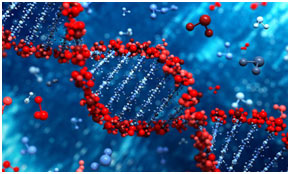Gene Expression and Regulation
DNA, the chemical vehicle of genetics, is made up of functional units, namely genes. The term genome describes the total genetic information contained in a cell. The bacteriaE. coli contains about 4,400 genes existing on a solitary chromosome.
The genome of humans is extra complicated, with 23 sets of (diploid) chromosomes having 6 billion (6 X 109) base pairs of DNA, with an estimated 30,000 to 40,000 genes.
Genetic Expression
Organisms adjust to environmental changes by altering gene expression. The regulation of genetics expression of genes is required for the: growth, development, differentiation, and very existence of organisms.
The process of alteration of gene expression has actually been researched thoroughly in prokaryotes. It generally involves the interaction of certain binding proteins with various regions of DNA in the immediate location of the transcription site and this creates either a positive or negative effect on transcription.
In eukaryotes, researches are not comprehensive as well as not well recognized. Cells in eukaryotes use the same standard concept but utilize various other devices to control transcription.
Types of Genetic Expression
There are two types of genetic expressions:
- Positive regulation
- Negative regulation
Positive regulation
When the expression of hereditary information is quantitatively increased by the existence of a certain regulatory factor, it is called positive regulation. The factor or molecule moderating positive regulation is called a positive regulator.
- A double negative has the effect of functioning as a positive. An effect that inhibits the feature of negative regulation shows up to produce a positive regulation.
Negative regulation
When the expression of genetic information is quantitatively decreased by the existence of a specific regulatory component, it is called negative regulation. The factor or molecule moderating negative regulation is called negative regulation.
Two Types of Genes
There are two types of genes
1. Inducible genes
The expression of the inducible genes increased in action to an inducer. Inducers are small molecules.
For example
- Some proteins produced by E. coli, e.g., β- galactosidase are claimed to be inducible since they are just generated in significant quantities when a specific inducer “Lactose” exists.
- Tryptophan pyrrolase of the liver is induced by tryptophan.
2. Constitutive genes
The constitutive genes are expressed at a more or less consistent rate in nearly all the cells and also, they are exempt to regulation. The products of these genes are required at all times in cells.
For example:
- Enzymes of the citric acid cycle.
One Cistron -One Subunit Concept
The earlier theory suggested that an individual gene generates one enzyme or protein, so the “one gene-one enzyme” concept was presented.
It is currently known that some enzymes and protein molecules are composed of two or more non-identical subunits, which cannot be explained by the “one gene-one enzyme” theory and so it is not valid.
The “cistron” is currently considered as the genetic device coding for the framework of the subunit of an enzyme or protein particle, functioning as the tiniest device of genetic expression.
Thus, the “one gene-one enzyme” idea could be a lot more precisely considered as “one cistron-one subunit concept”.

